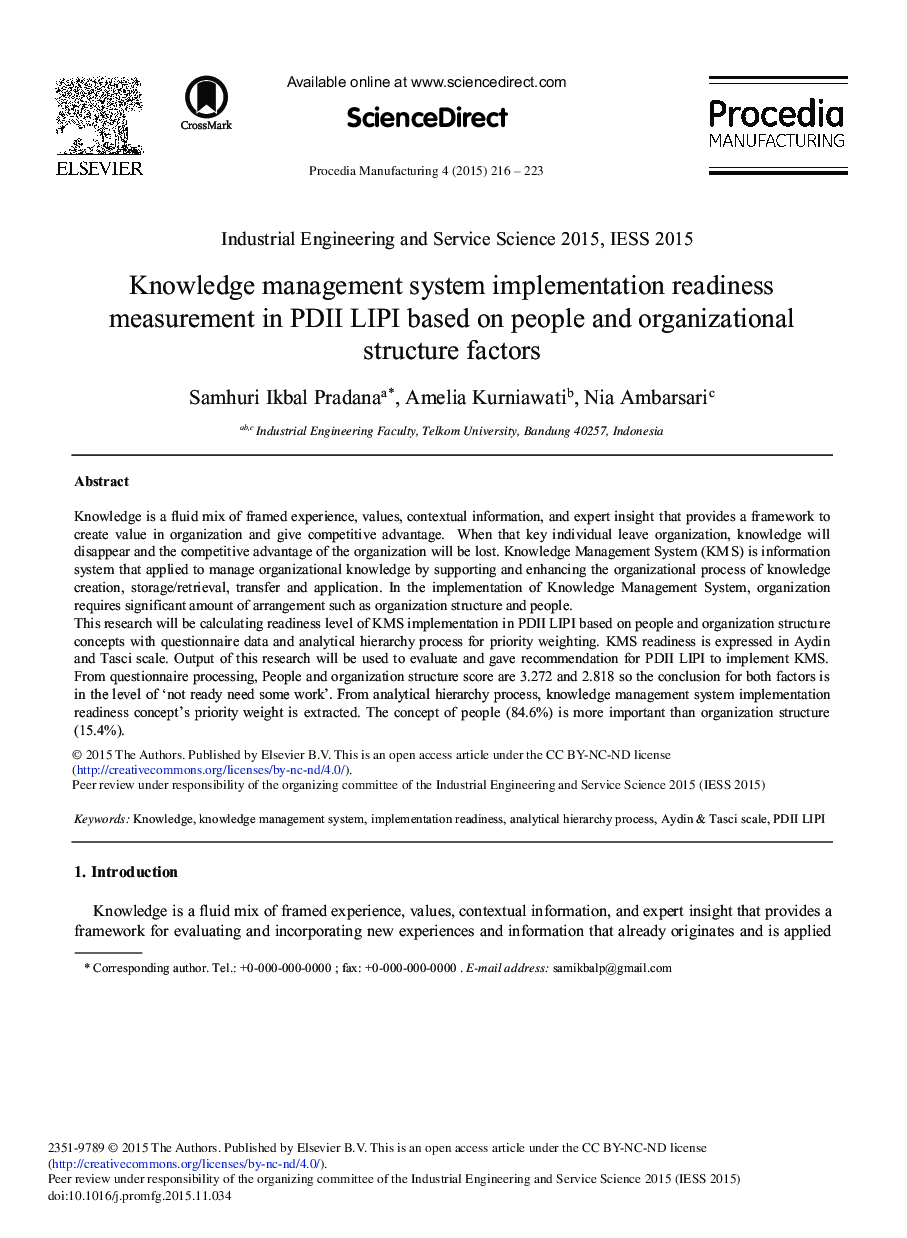| کد مقاله | کد نشریه | سال انتشار | مقاله انگلیسی | نسخه تمام متن |
|---|---|---|---|---|
| 1143526 | 1489608 | 2015 | 8 صفحه PDF | دانلود رایگان |

Knowledge is a fluid mix of framed experience, values, contextual information, and expert insight that provides a framework to create value in organization and give competitive advantage. When that key individual leave organization, knowledge will disappear and the competitive advantage of the organization will be lost. Knowledge Management System (KMS) is information system that applied to manage organizational knowledge by supporting and enhancing the organizational process of knowledge creation, storage/retrieval, transfer and application. In the implementation of Knowledge Management System, organization requires significant amount of arrangement such as organization structure and people.This research will be calculating readiness level of KMS implementation in PDII LIPI based on people and organization structure concepts with questionnaire data and analytical hierarchy process for priority weighting. KMS readiness is expressed in Aydin and Tasci scale. Output of this research will be used to evaluate and gave recommendation for PDII LIPI to implement KMS. From questionnaire processing, People and organization structure score are 3.272 and 2.818 so the conclusion for both factors is in the level of ‘not ready need some work’. From analytical hierarchy process, knowledge management system implementation readiness concept's priority weight is extracted. The concept of people (84.6%) is more important than organization structure (15.4%).
Journal: Procedia Manufacturing - Volume 4, 2015, Pages 216-223